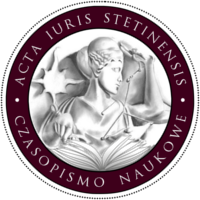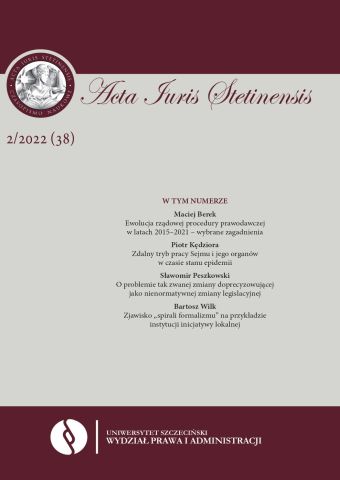







| Authors: |
Michał
Kuśmirski

Katolicki Uniwersytet Lubelski Jana Pawła II |
| Keywords: | neutrality tax rate goods and services tax VAT fast food |
| Data publikacji całości: | 2022 |
| Page range: | 15 (225-239) |
| Downloads ?: | 216 |
| 1. | Adamczyk A., Kluzek M., Stopień realizacji zasady neutralności podatku vat w państwach Unii Europejskiej – próba kwantyfikacji, „Studia Ekonomiczne. Zeszyty Naukowe Uniwersytetu Ekonomicznego w Katowicach” 2018, nr 358. |
| 2. | Andrzejczak K., Konsekwencje rozbieżności w interpretowaniu przepisów w sprawie stawki VAT dla branży meblarskiej, „Studia Oeconomica Posnaniensia” 2015, nr 3. |
| 3. | Baraniewicz R., Śliż W., Zastosowanie obniżonej stawki opodatkowania VAT na podobne produkty spożywcze, „Przegląd Podatkowy” 2015, nr 9. |
| 4. | Bucior G., Neutralność podatku od towarów i usług w gminie, „Finanse, Rynki Finansowe, Ubezpieczenia” 2016, nr 2. |
| 5. | De la Feria R., VAT: A New Dawn for the principle of fiscal neutrality?, „Oxford University Centre for Business Taxation” 2011, nr 5. |
| 6. | Famulska T., Rogowska-Rajda B., Principle of vat neutrality and the reverse charge mechanism, „Financial Internet Quarterly” 2018, nr 14. |
| 7. | Gibasiewicz D., Zasada neutralności podatku od wartości dodanej w orzecznictwie Trybunału Sprawiedliwości Unii Europejskiej, Warszawa 2012. |
| 8. | Karpova O.M. i in., Prospects and Problems of Realization of the VAT Neutrality Principle in Russia and China, „Journal of Tax Reform” 2020, nr 2. |
| 9. | Kobylarz M., Prawa podatnika w zakresie odliczania podatku naliczonego w orzecznictwie Naczelnego Sądu Administracyjnego uwzględniającym prawo Unii Europejskiej oraz wyroki Trybunału Sprawiedliwości, „Rocznik Administracji Publicznej” 2018, nr 4. |
| 10. | Peretiatkowicz L., Wojtas M., Klasyfikacja statystyczna towarów a wybór stawki VAT dla produktów spożywczych, „Finanse, Rynki Finansowe, Ubezpieczenia” 2017, nr 3. |
| 11. | Stiller W., Neutralność podatku od wartości dodanej, „Studia Ekonomiczne. Zeszyty Naukowe Uniwersytetu Ekonomicznego w Katowicach” 2016, nr 273. |